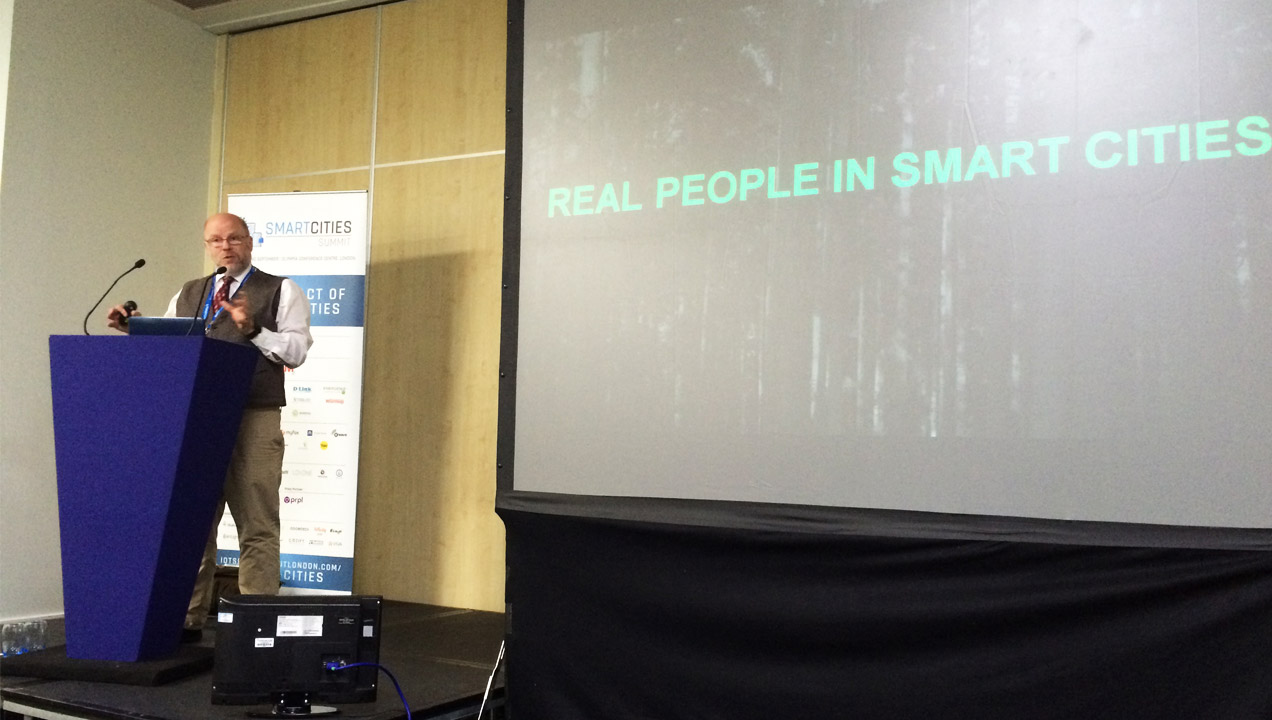10 thoughts on Smart Cities from Smart Summit London
We’ve been at the Smart Summit in London discussing the future of Smart Homes and Smart Cities with some of the leading lights of the Internet of Things community. Here are some observations and conclusions, taken from many sources including our own research and conversations with the many insightful industry speakers.

A lot of Smart Home will be invisible
When people talk about Smart Home products, they tend to focus on things on gadgets you could show off: a thermostat like Nest, a listening device like Echo, or a cappuccino machine that talks to your alarm clock. But a large number of Smart Home products will just invisibly sit in the background making you comfortable.
The future is (not quite) here
Mass adoption of Smart Home products is not here yet, and no one in the room thought they would be here in 5 years. It was generally thought we were looking at more like 10 years or longer, and it would require a trusted company to do for the Smart Home what Apple did for the Smart Phone… but nobody knows who that will be, though the names of Amazon, Apple, and Google came up a lot.
People will expect cross-manufacturer integration
There’s a lot of disagreement over how much standardization the Smart Home area requires, although it is recognized that consumers generally prefer not to be limited to one specific manufacturer’s products. There is a feeling that the once popular model of a variety of devices all connected to a single controller platform may not be the best way to go.
Councils and developers may be early adopters
Large landlords like councils and large scale new home builders could play an outsize role in adoption of Smart Home technologies. If the technology genuinely can save money and offer a good ROI, these are the entities with enough scale and financial muscle to become the Smart Home’s early adopters.

Andrew Swartz speaking at Smart Summit London
The definition of Smart is evolving
Of course, the meaning of Smart Home and Smart City is still up for grabs, or rather the definitions can be so loose that it’s a very big party. Anyone who has a tool or gadget that connects to the internet and helps a home or city will use the “Smart” label. A little more definition is probably due to really clarify the core elements of the Smart Home as we’ll come to know it.
Homes and Cities may be smarter together
The crowds interested in applications for Smart Homes and Smart Cities are mostly distinct interest groups. But there are interesting crossover points, such as home applications that use city data (picture an alarm clock that relies on traffic data collected by smart traffic sensors). Of course, the technical teams that create the infrastructure, from the communication protocols, APIs, and embedded code that the systems share don’t care if they will be used in homes or cities. That’s a broader consumer adoption issue.
Smart Cities as artistic inspiration
Smart Cities are inspiring a lot of whimsy as artists conceive how to use all the data and tools for playful purposes, from interesting representation of how many people are in a building to how to cast people’s shadows from one part of town onto people walking in another part. It’s a very creative movement.
Experience design will play a huge role
Creating a Smart City is not only going to involve a lot of new technology, but tremendous amounts of process reengineering. Creating a simple process for a citizen takes a lot of work behind the scenes. Expect experience design to play a huge role in the coming decade of Smart City development.
Government as a one-stop service
Some city planners see the future of Smart Cities as allowing citizens to deal with the government as one-stop-service shopping, not having to know which department does what, but using an app as a unified point of contact. This is a challenge that most governments will have to address, sooner or later, and it’s a complex one that will take a lot of time to work out.
Smart-inclusion for all
There is some attention being paid to an interesting and important problem. What happens to people who can’t access the tools of the Smart City, blocked by poverty, disability, or language barriers? We should be thinking more about this. A Smart City will only be as smart as its satisfied users…
This area is one of huge potential and as the summit has demonstrated, brings together as many different viewpoints and technologies as you’ll find in any city in the world today. The future is far from set, but the Smart City’s direction of travel is fascinating, diverse and multicultural. As it should be.
